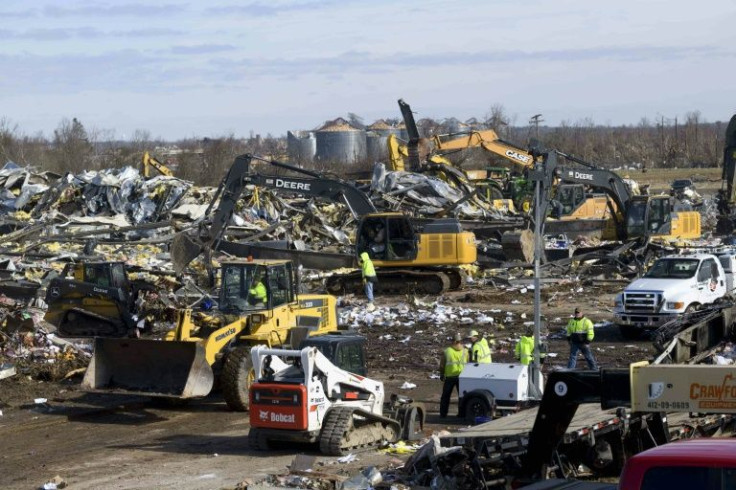Climate Change News: Expect More Tornado Disasters Amid Global Warming
Tornadoes devastated the Midwest and Southeast over the weekend, causing millions of dollars in property damage and loss of life that could exceed 100.
In Kentucky, Arkansas, Illinois, Missouri, Mississippi and Tennessee, these disasters may occur more frequently as the air warms, climate scientists have warned.
This weekend's tragedy will cost the U.S. government millions of dollars in an already costly battle against climate change. While scientists say it is too early to know the full impact of climate change, its effects have become more visible. There also has been an increase in the frequency of tornadoes and a shift in where they happen in the U.S.
Seventy-five percent of the world’s tornadoes occur in Tornado Alley, which spans eight states. December is typically the quietest month for tornadoes in the region.
“In the aggregate sense, the statistics are pretty clear that not only has there sort of been a change — a shift, if you will — of where the greatest tornado frequency is happening. But these events are becoming perhaps stronger, more frequent, and also more variable,” professor Victor Gensini of Northern Illinois University, one of the U.S.’ top tornado experts, told CNN.

Climate change has increased the frequency and strength of weather events like hurricanes because of increased temperatures around the world. That warming leads to an increase in hot, humid air in some places, raising the chances for intense storms.
It is not necessarily a surprise that the same would apply to tornadoes. The effects of climate change and global warming may be making the environment more favorable for tornadoes in terms of frequency and strength.
Officials warn that the U.S. needs to update its infrastructure to deal with these weather events, otherwise, these disasters will keep bringing more tragedy.
© Copyright IBTimes 2025. All rights reserved.






















